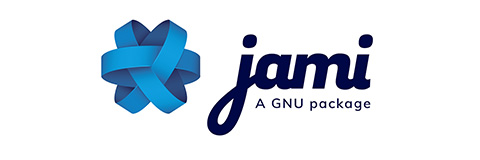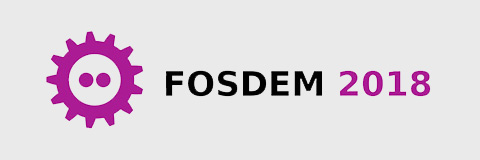 Blockchain technology brings on a new revolution, as its advocates write on every wall, it is likely to deeply change our verticaly-shaped society. Savoir-faire Linux uses its mechanism to develop Ring distributed ledger and users ID management.
Blockchain technology brings on a new revolution, as its advocates write on every wall, it is likely to deeply change our verticaly-shaped society. Savoir-faire Linux uses its mechanism to develop Ring distributed ledger and users ID management.
Blockchain is the technology on which Bitcoin is based. This digital cryptocurrency displays both fear and covetness among the financial sector. However, beyond bitcoin, blockchain offers other exploitations, thanks to its decentralized, anonymous and secure operation. In addition, it reveals governance challenges, which can tumble organizations as we’ve seen them for decades. That’s why blockchain is one of the major issues of the 2016 Paris Open Source Summit, November 15th and 16th.
A decentralized society, without trusted third parties
There is no doubt about it : blockchain technology will have as much as an inpact as the invention of the web. According to its promoters, this technology is more than a tool, it will change the shape of society, towards a more decentralised one. Blockchain will overturn the trusted third party concept, if not remove it.
Blockchain works as a big public ledger, which registers every transaction between users. This large database is shared by all of them. Their identities are systematically verified by asymetric encryption. The transactions are put in a block, encrypted and certified by the network’s node – composed of other users aka miners- the block will be added to the chain and distributed through the network to all users.
The blockchain’s fundamentals are distintermediation, traceability and distributed consensus. As they are organized in decentralised nodes, users act as a validation authority. Hence, the transactions are traceable in the public and shared ledger. The distributed consensus lies in the following fact : every node receives the same chain of timestamped data through this huge ledger, and what’s more, every change has to be approved by a majority of miners.
Blockchain was born where cryptography and decentralised networks meet. The 2008 financial crisis and the lack of confidence towards banks were its breeding ground. Besides Bitcoin, created by Satashi Nakamoto, whose real name is not yet publicized, several trustless architectures have been set up. Among them, Ethereum is one of the most widely used. This non-profit foundation has a blockchain based system, which takes up the ID ledger and unforgeable history to execute any sort of code, called «smart contract»
Blockchain, a fundamental tool for Ring
Savoir-faire Linux’s team of experts has used Ethereum technology to include encryption standards in the creation of Ring’s database The smart contract is therefore the public ledger of names associated with a RingID, which is created by the application. As in every blockchain «each link depends on the previous elements to ensure the security of the database and to make it unforgeable» explains Adrien Béraud, Systems engineer, in charge of developing the distributed hash library OpenDHT.
Blockchain integration in Ring’s public key directory follows Savoir-faire Linux’s guidelines : to preserve the distributed network as Ring puts it, to ensure security with encryption keys and to let the user opt in or opt out of the public ledger. « This option offers the user the possibility to register or not the database and only use his RingID to communicate onto the network» details Adrien Béraud.
The smart contract coding is key. Given the fact that the decentralised registry is optional, users can preserve their pseudonymity through its RingID, which is then not associated with an alias or a username. Some smart contracts failed, because the code revealed some errors or vulnerabilities. Ring’s development team at Savoir-faire Linux tries toavoid any risk by following a basic principle: «we try to write a code with a simple design, with great care».
«Furthermore, we put the focus on a thorough QA, code review and we rely on external outputs», he concludes.
Contribute to Ring’s succes as well as Blockchain philosophy by coding with us!
References
The Revolution will (not) decentralised: Blockchains, Rachel O’Dwyer, Commons Transitions, 11 june 2016
Thinking through Law and Code – The future of State and Blockchain, Julian Feder, Backfeed magazine, 17 january 2016
Blockchain reaction, tech companies plan for critical mass, Ernst & Young Report, 2016
Privacy on the Blockchain, Vitalik Buterin, Ethereum Blog,15 january 2016
Comprendre la blockchain, Livre blanc, licence Creative Commons, U, January 2016
Les smarts contracts pour les non développeurs, Blogue Ecan, 23 juin 2016
Lexique de la blockchain, Blockchain France



 Blockchain technology brings on a new revolution, as its advocates write on every wall, it is likely to deeply change our verticaly-shaped society. Savoir-faire Linux uses its mechanism to develop Ring distributed ledger and users ID management.
Blockchain technology brings on a new revolution, as its advocates write on every wall, it is likely to deeply change our verticaly-shaped society. Savoir-faire Linux uses its mechanism to develop Ring distributed ledger and users ID management.




Does this really need to be on a blockchain? How does this ledger sustain itself, considering Ethereum’s gas fees for transaction usw.?